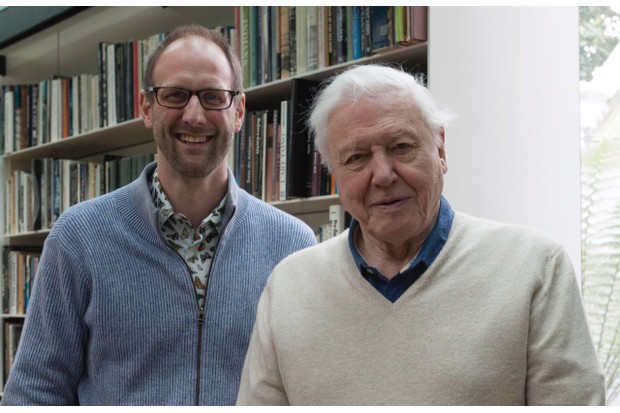Living bridges
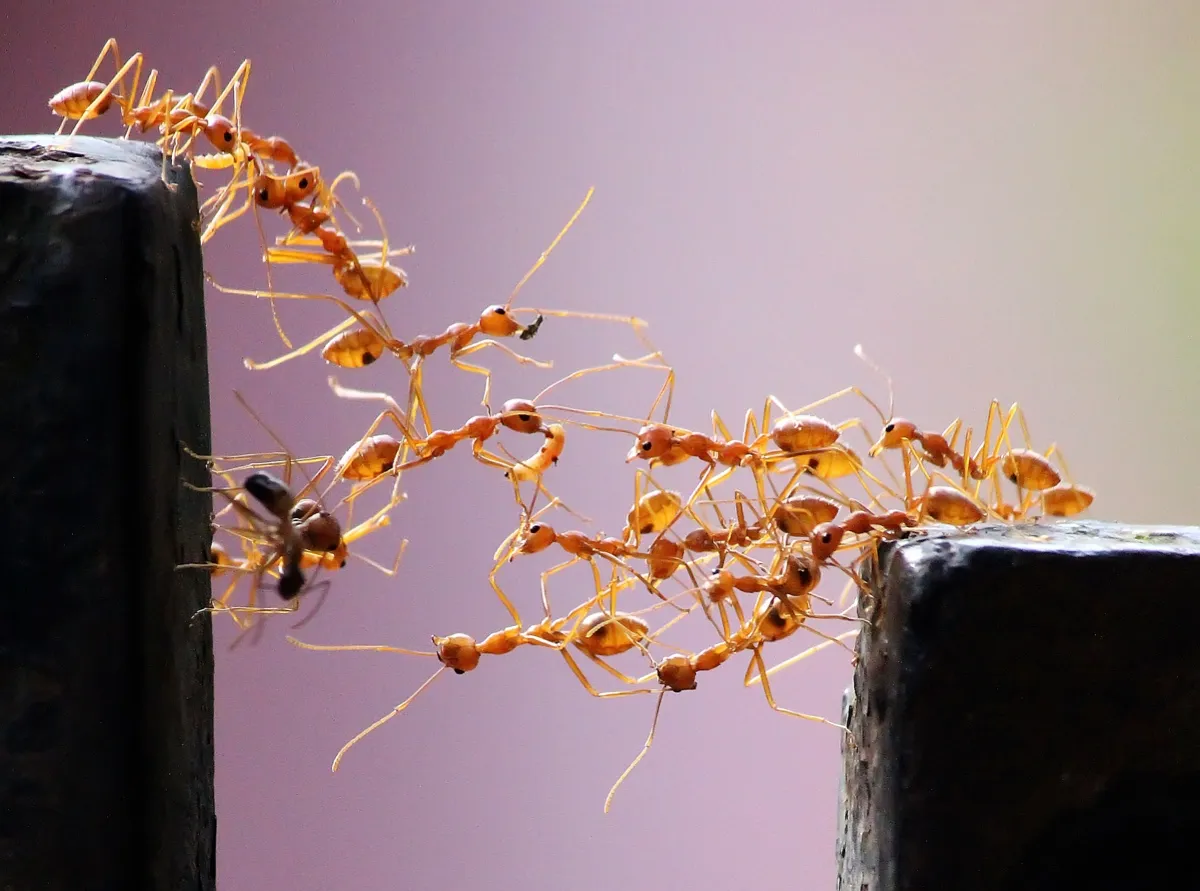
Army ants in huge raiding columns will deploy their own bodies to form living bridges so fellow workers can cross gaps quickly. A bridge consists of up to 50 ants and a colony may have 40 or 50 bridges in use at any time. Myrmecologists (people who study ants) at the New Jersey Institute of Technology’s Swarm Lab have worked out a simple rule governing this behaviour.
Ants only stay in a bridge if they feel sufficient numbers of other ants scurrying over their backs. To justify investing that much labour, the shortcut has to be popular. If fewer ants cross, forming a bridge isn’t worth the effort – it’s better for the colony if these ants go around the obstacle the long way.
It’s a wrap
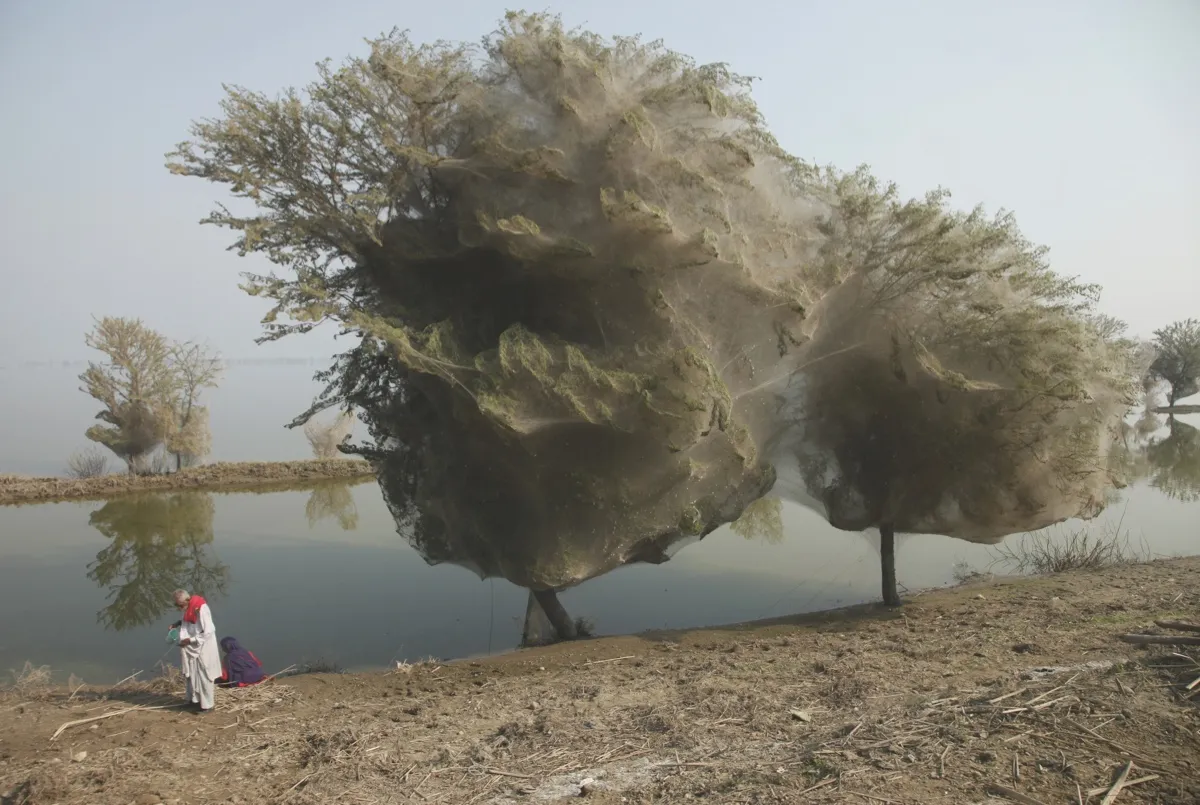
In 2010, countless trees were left shrouded in swathes of silk in Pakistan following monsoon rains. It’s thought that the flood waters forced millions of spiders to take refuge in the trees, where they spun these veil-like webs. Though the identity of the spiders in this image is not known, some species will congregate in composite webs, often resembling huge hammocks or sheets.
Spiders live alone as a rule, but some – most of which are small and occur in the tropics – exhibit varying degrees of social behaviour. Communal webs enable them to catch much bigger prey and share the energy-sapping tasks of spinning the webs and maintaining their structure. Occasionally, enormous megawebs appear, covering several hundred square metres in silk, perhaps because a superabundance of prey caused an explosion in the local spider population.
Read more:
- The blobfish: A bloated guide to the world's ugliest animal (and what they really look like)
- Meet the mantis shrimp, your new favourite animal
- Remembering Bears: Incredible photography from the upcoming book
Wheels of fortune

When first discovered in 1995 near the Japanese island of Amami, these submarine ‘crop circles’ were a mystery. Were they created by animals, currents or something else? Over 15 years later, divers spotted the seabed sculptor: a tiny pufferfish (Torquigener albomaculosus) new to science.
The male takes around a week to fashion a two-metre-wide nest that dwarfs his 12cm frame. He ploughs through the sediment with his fins and tail whirring to produce symmetrical peaks and troughs. He then sweeps the sandy amphitheatre clean of debris, moving scraps of seaweed or coral to the perimeter.
If his labours lure a female, the pair spawn in the middle – but the moment the eggs hatch, he abandons the nest to start all over again. In her book Eye Of The Shoal, marine biologist Dr Helen Scales suggests the sculpture may make an ideal soft spot for the developing eggs, with the furrows channelling oxygenated water tothe centre.
Snug as a bug
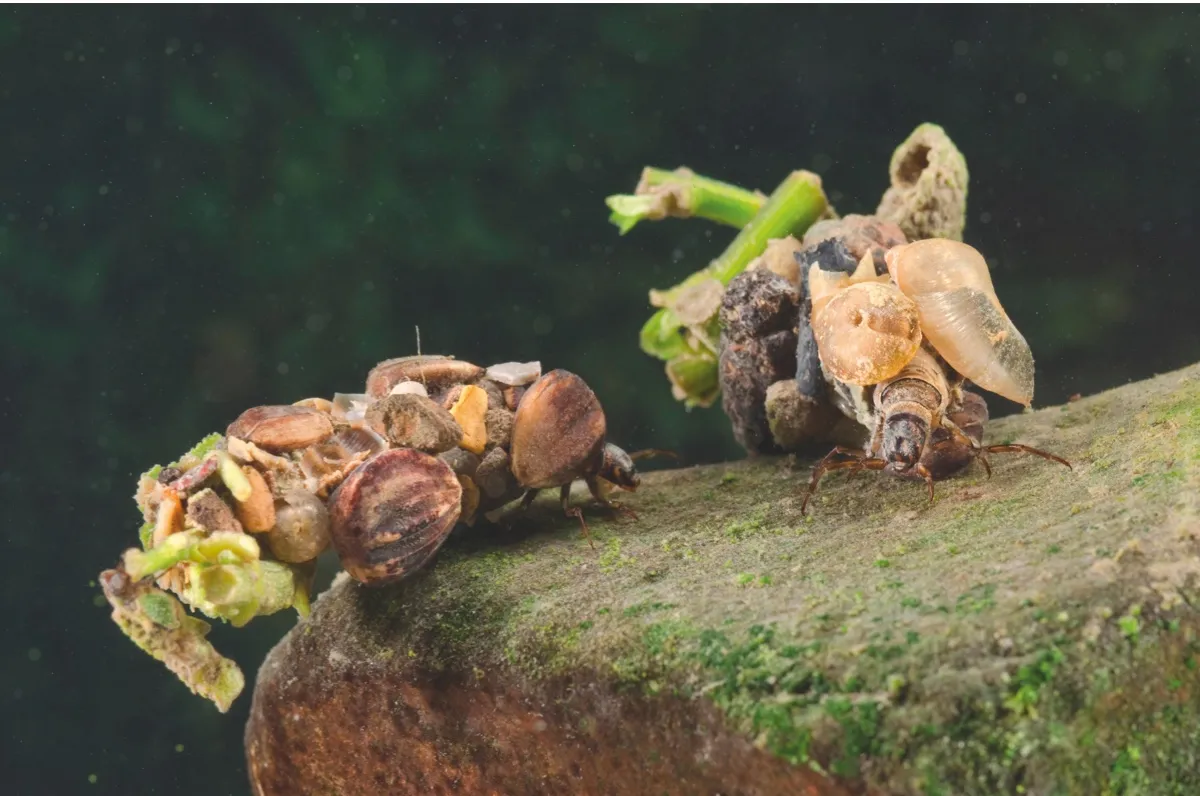
Caddisflies could potentially be the first animal architects. Fossils of the elegant little cases built by their aquatic larvae have been dated to the Early Jurassic (and possibly earlier), well before social insects or birds appeared on Earth. Caddisfly larvae are like weird underwater caterpillars that frequent the bottom of streams and ponds, and many fabricate tubes no thicker than a pencil in which to live.
Assembled from grains of sand, fragments of twig or leaf, snail shells and any other debris to hand, the cases protect the soft-bodied larvae from the turbulence of the water current and from predators such as fish. The larvae wriggle out and build new cases as they grow – most will make five in one or two years – before finally leaving the water as short-lived winged adults. French artist Hubert Duprat famously gave larvae gold leaf and pieces of gemstone, with which they created beautiful gilded tubes.
Pole position
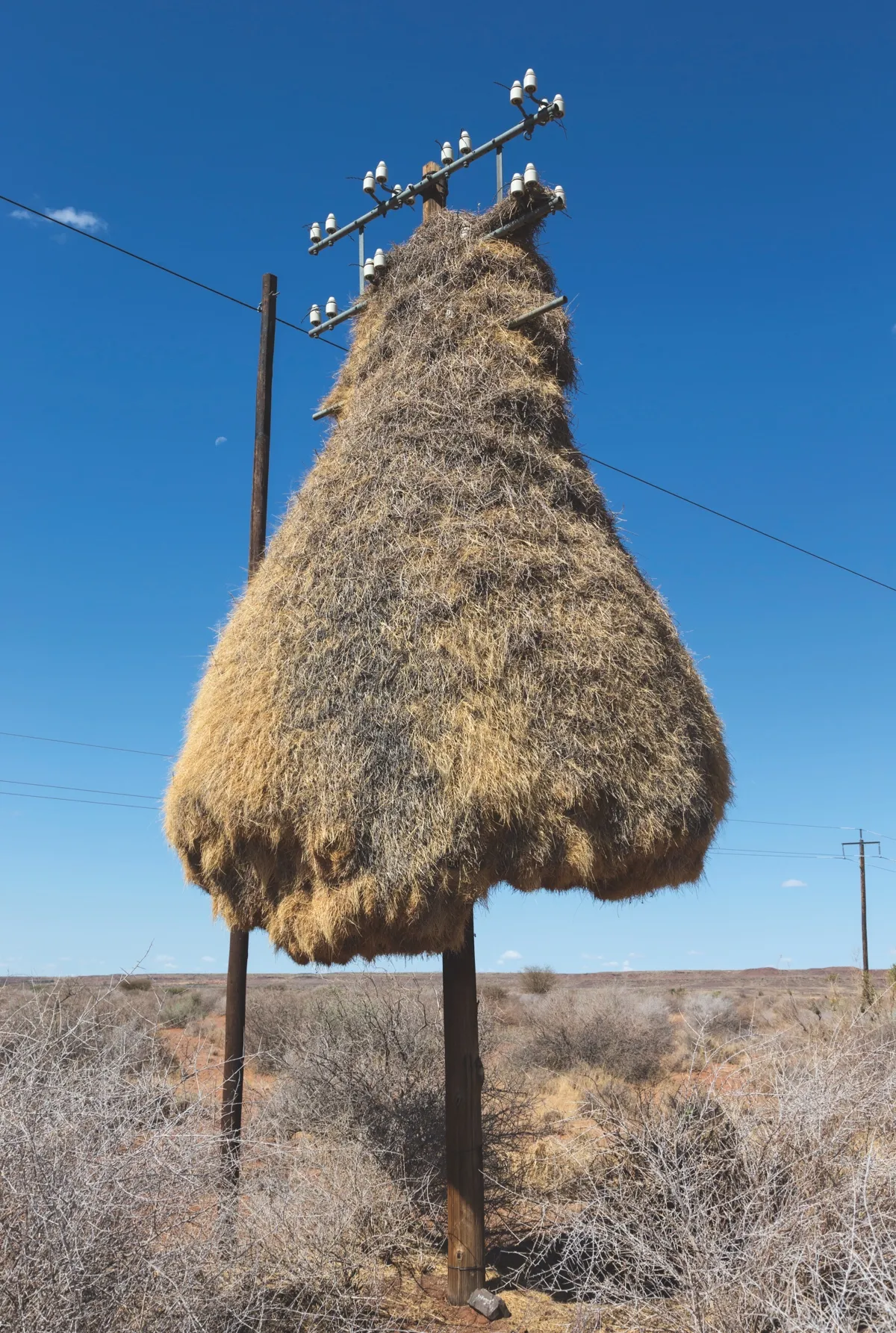
Weavers are finch-like birds celebrated for their exquisite nests made from knotted strands of dry grass. Most weave spherical or orb-shaped nests, sometimes with a tubular entrance to keep out predators. But sociable weavers, which live in southern Africa, build a giant communal nest that ends up swamping its tree (or telegraph pole, like the one pictured).
Some of these sprawling avian high-rises last for up to 100 years and can grow to more than 10 cubic metres in size, making a cosy home for between 200 and 300 breeding pairs of sociable weavers. The spectacular structure protects the residents from extremes of temperature, with every pair housed in a separate flask-like chamber.
A 2016 study by researchers at the University of Miami found that ‘selfish’ birds that lavish time on repairing their own internal living quarters are likely to be on the receiving end of aggression from nest-mates working on the shared exterior thatch. After being apprehended, the selfish birds switched to more community-minded tasks for the good of the colony.
What lies beneath
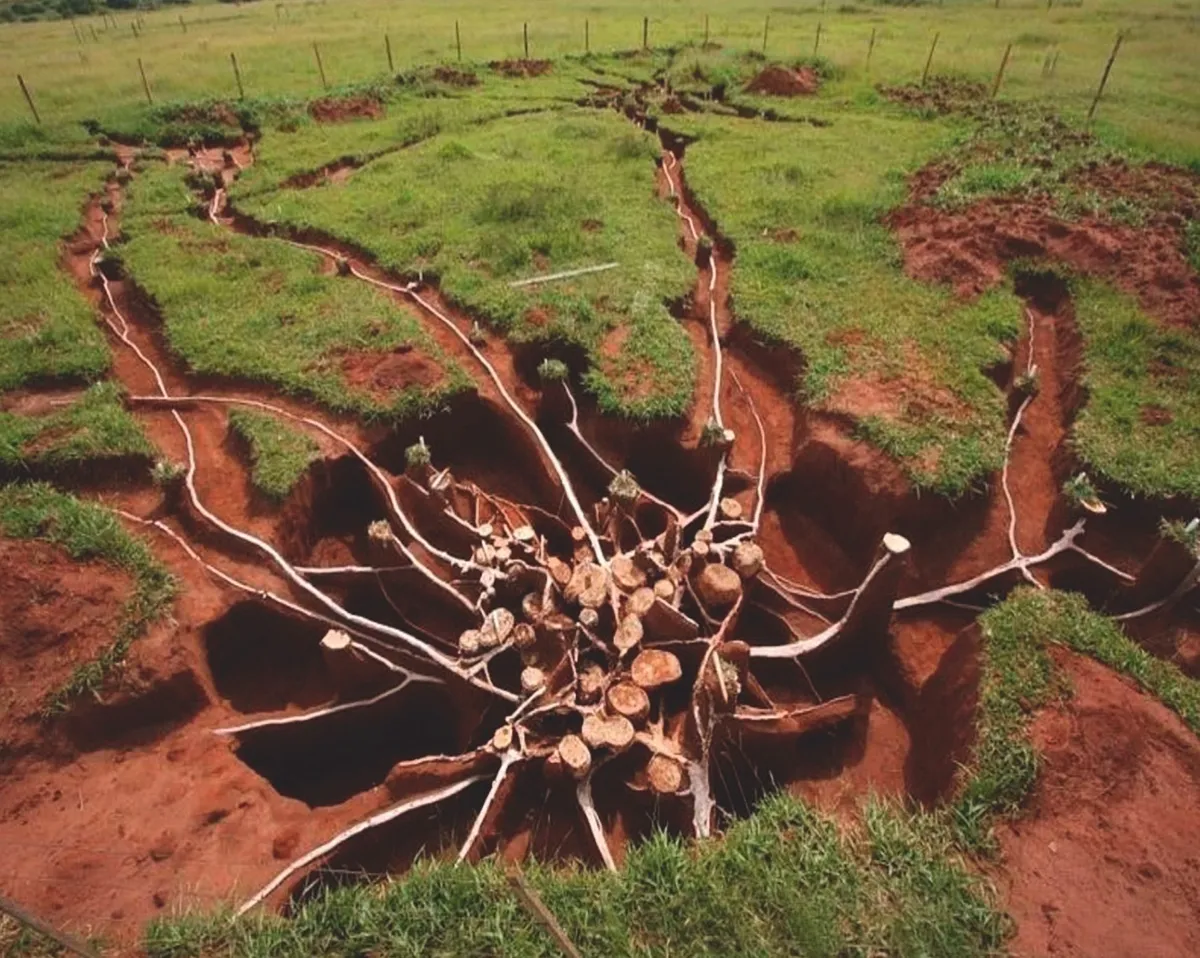
Withouta doubt, ants are the greatest farmers after humans. Dependent on the species, they might tend crops (fungi) or herds of livestock (small insects called aphids) in massive subterranean nests. Yet these metropolises and the farming operations that sustain them are largely invisible, leading scientists to find innovative ways of revealing their hidden architecture. One technique is to excavate an abandoned nest and pour concrete into the maze of tunnels and chambers to produce an enormous cast.
The labyrinthine nest pictured here was found in Cerrado, which is the largest savannah in South America. It was made by a species of grass-cutting ant that harvests grass, carrying it underground to use as fertiliser for the precious fungi on which the colony feeds. Around 40 tonnes of earth, maybe more, would have been shifted in the nest’s construction. In addition to its chambers that act as fungus gardens, the underground city has ‘rubbish dumps’ where the ants dispose of waste. There is even an air-conditioning system: tunnels dug to maximise the flow of fresh air from the surface.
All together now
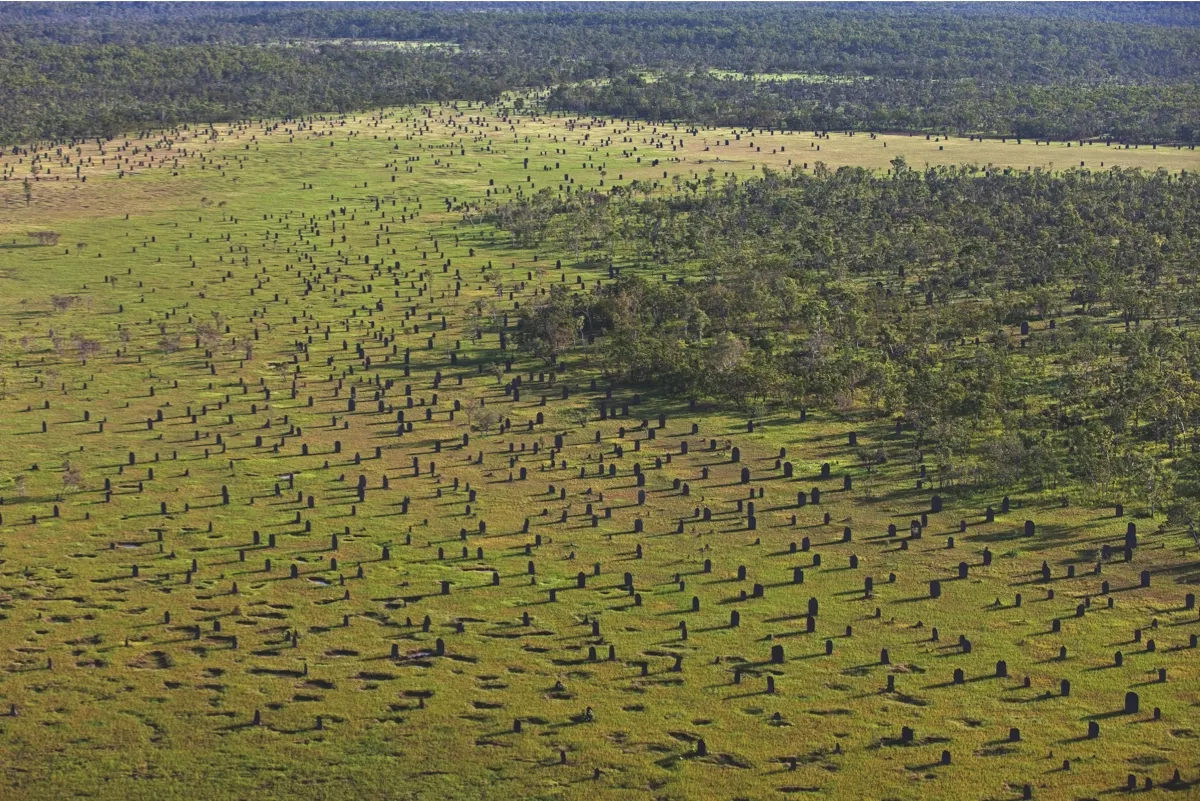
We now know that magnetoreception, the ability to detect Earth’s magnetic field, is quite common in nature. Everything from sea turtles to songbirds, bats, lobsters, snails, ants, bees and moths have been shown to navigate using it. It’s all the more impressive when you consider that our planet’s magnetic field is actually extremely weak.
There is one species of termite, unique to Australia’s Northern Territory, that appears to use this magnetic sense in the construction of its nest mounds. Known as the magnetic termite, its mounds are aligned with the thin edge oriented north-south. One theory is that this ensures the widest edges, and therefore greatest possible surface area, faces east and west to receive the welcome warmth of the morning and evening sunlight, while avoiding the scorching heat of the middle of the day. Seen from the air, the regularly spaced termite mounds form a grid, like some kind of weird cemetery, as you can see in the image above.
Birdy boudoir
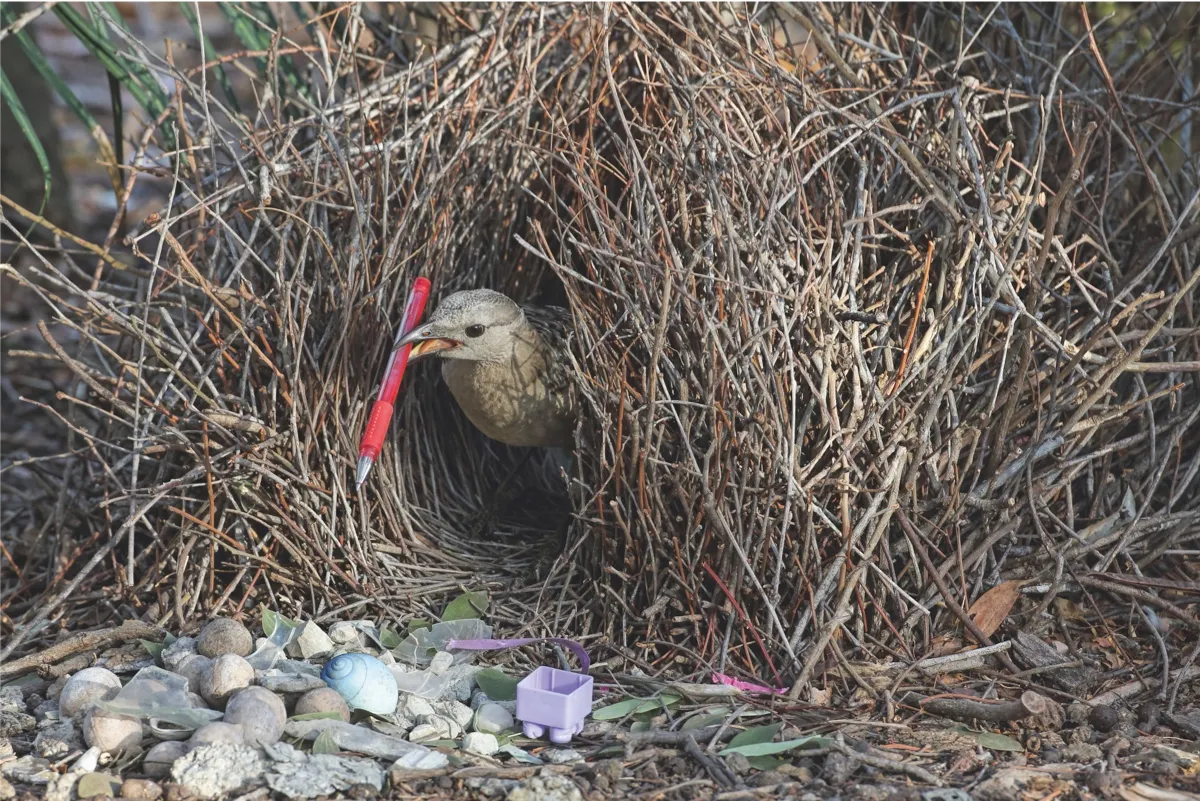
In the bird world, males impress would-be partners with extravagant songs, dance moves or nest-building skills, but Australia’s great bowerbirds go the extra mile. They spend days constructing elaborate stick-structures whose sole function is to stage their display. The male great bowerbird weaves two thick panels to form a stately thatched avenue one-metre high, then arranges a host of eye-catching objects at either end.
His eclectic collection can include everything from leaves to bits of rubbish – plastic (a sign of the times) is especially popular – and individuals have curatorial preferences, with many of this species favouring red or white items such as berries, flowers or shells.
Here’s the clever bit: objects are displayed in size order, with the smallest ones near the bower, to set up a forced perspective that gives the illusion the bird is larger than he actually is. It’s a technique youngsters take years to perfect, and the mental gymnastics involved might explain why the family has bigger brains than othersimilar-sized birds.
- This article first appeared in issue 381 of BBC Science Focus – find out how to subscribe here
Read more:
